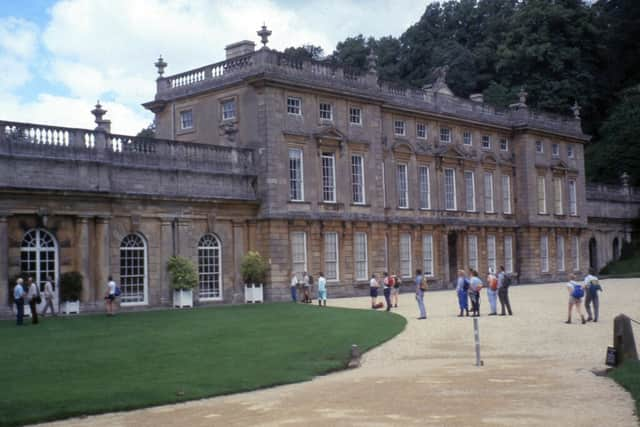National Trust spends record £179m on conservation efforts at historical buildings, but where has this been spent?
and live on Freeview channel 276
The National Trust has recorded a record annual sum spent on conserving historical buildings, gardens and collections to ensure they can be enjoyed by future generations. The spend forms part of vital works to repair and maintain certain historically important elements of heritage in England, Wales and Northern Ireland.
But you may be curious to know where this money comes from and how it is spent.
Advertisement
Hide AdAdvertisement
Hide AdIn 2022/23, the trust spent £179.6 million on conservation efforts - the same year it recorded an unprecedented fundraising year too.
The projects which range from large to small in scale include some of these listed below as NationalWorld explains behind the numbers.
What has the record conservation fund been spent on?


Projects involved in the conservation efforts include:
- Transformation of Dyrham Park house and estate
- Ambitious £7.4 million project at Seaton Delaval Hall, Northumberland
- 13,425 hours were dedicated at the Trust’s Textile Conservation Studio in Blickling and the Royal Oak Foundation Conservation Studio at Knole to the conservation of textiles, furniture, artworks and other items
- Textiles from the 1720 Erddig State Bed went on display in a temporary exhibition following the completion of over a thousand hours of major treatment
- More than a million trees planted, each capable of storing 1 tonne of carbon over their lifetime and almost 17,000 hectares of new wildlife habitat created by the end of 2022
- Addressing the impact of climate change and extreme weather was at the forefront of conservation efforts in the 220+ gardens in the care of the Trust, including the fall-out from Storm Arwen
- The National Trust, RSPB and WWF worked in partnership to commission the first UK-wide citizens’ assembly for nature: the People’s Plan for Nature
- New openings post-conservation work included the ‘Garden in the ruins’ at Nymans, Sussex.
- The first ever Children’s Country House at Sudbury, Derbyshire
- Conservation efforts in the more than 22,000 gardens in the Trust’s care
- 19 gardens were helped to recover from the damage caused by Storm Arwen
- Oxburgh Estate’s historic Parterre Garden was adapted for the challenges of the 21st century, using replacement hedging well-suited to the dry, exposed conditions of that area of Norfolk
- Work on the conservatory at Cliveden, with improvements needed to the rainwater disposal system and infrastructure, as historic piping and drainage were unable to cope with increased rainfall.
- In Birmingham, once known as the town ringed by blossom, the Trust planted hundreds of fruit trees at 180 locations, working in partnership with National Express West Midlands.
- In Manchester, Castlefield Viaduct opened, a free-to-access urban park in the sky, which in the five months since July 2022 welcomed over 20,000 visitors
Director-General Hilary McGrady says: “The record funds we dedicated in the last financial year reflects the National Trust’s enduring commitment to the beautiful historic places in its care, and the nation’s enthusiasm for this.
"We were able to make this significant investment during a particularly difficult economic environment, with rising costs and continued recovery from the pandemic, thanks to the millions of people who support our cause. Despite the challenges, our priority has been preserving the historic houses, buildings, gardens and collections in our care, for current and future generations to enjoy.”
Where have the funds come from?
Advertisement
Hide AdAdvertisement
Hide AdThe money used in conservation efforts here comes from a number of sources including membership and visitor income, as well as fundraising (legacies, funders and donors). Commercial arms like shops, also contribute valuable income to conservation work.
2022/23 was also a record year for fundraising, with £117 million raised for core conservation work and improving access to nature, beauty and history. Legacy income exceeded £70 million for the first time, as people continue to remember the Trust in their wills.
Onsite fundraising was significantly bolstered by sales through second-hand book shops, with the £2.5 million donated paying for more than 55,000 hours of expert collection conservation.
Hilary McGrady added: “The generosity of our donors, funders and members continues to amaze us. It is only because of them that we can continue the work of the Trust. As well as our conservation programme, we are working hard to make sure that people have access to the quiet amd space that our founder, Octavia Hill, knew was so important for people’s physical and mental well-being.
Advertisement
Hide AdAdvertisement
Hide Ad"This has been yet another challenging year, as prices have continued to rise and personal finances have been put under intense pressure. I’m delighted that people are so dedicated to spending their time and money with us during these difficult times, and that the National Trust’s charitable mission continues to resonate deeply with so many people.”
Comment Guidelines
National World encourages reader discussion on our stories. User feedback, insights and back-and-forth exchanges add a rich layer of context to reporting. Please review our Community Guidelines before commenting.
